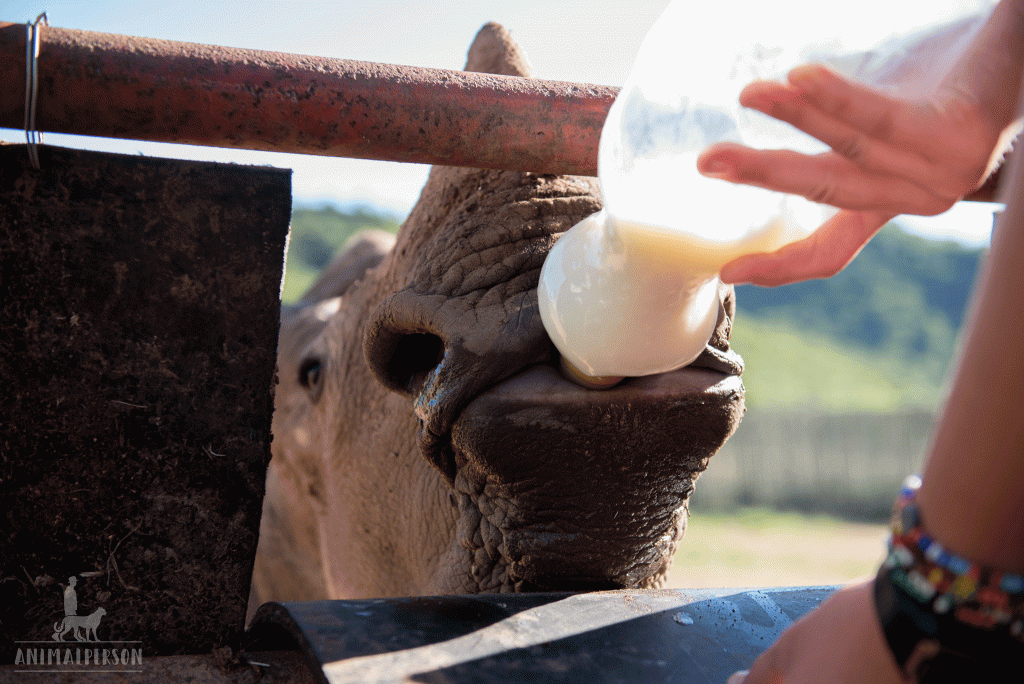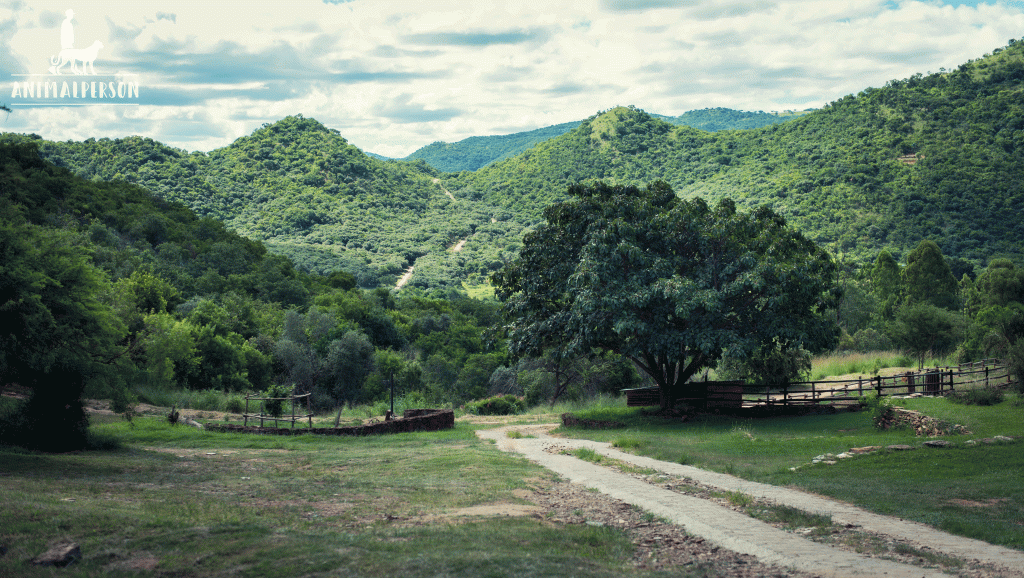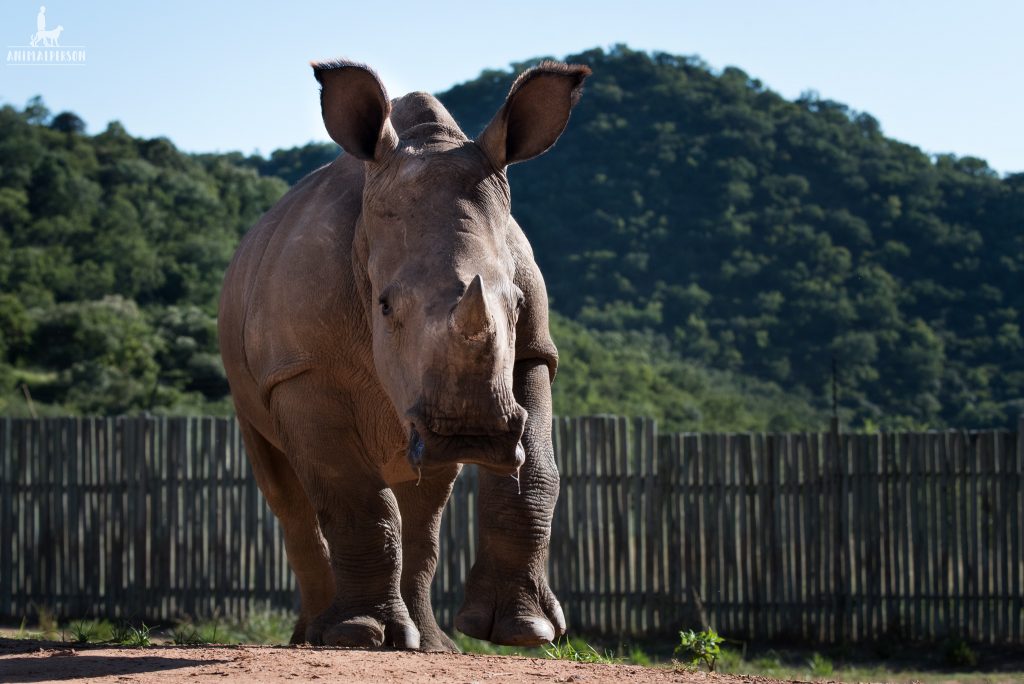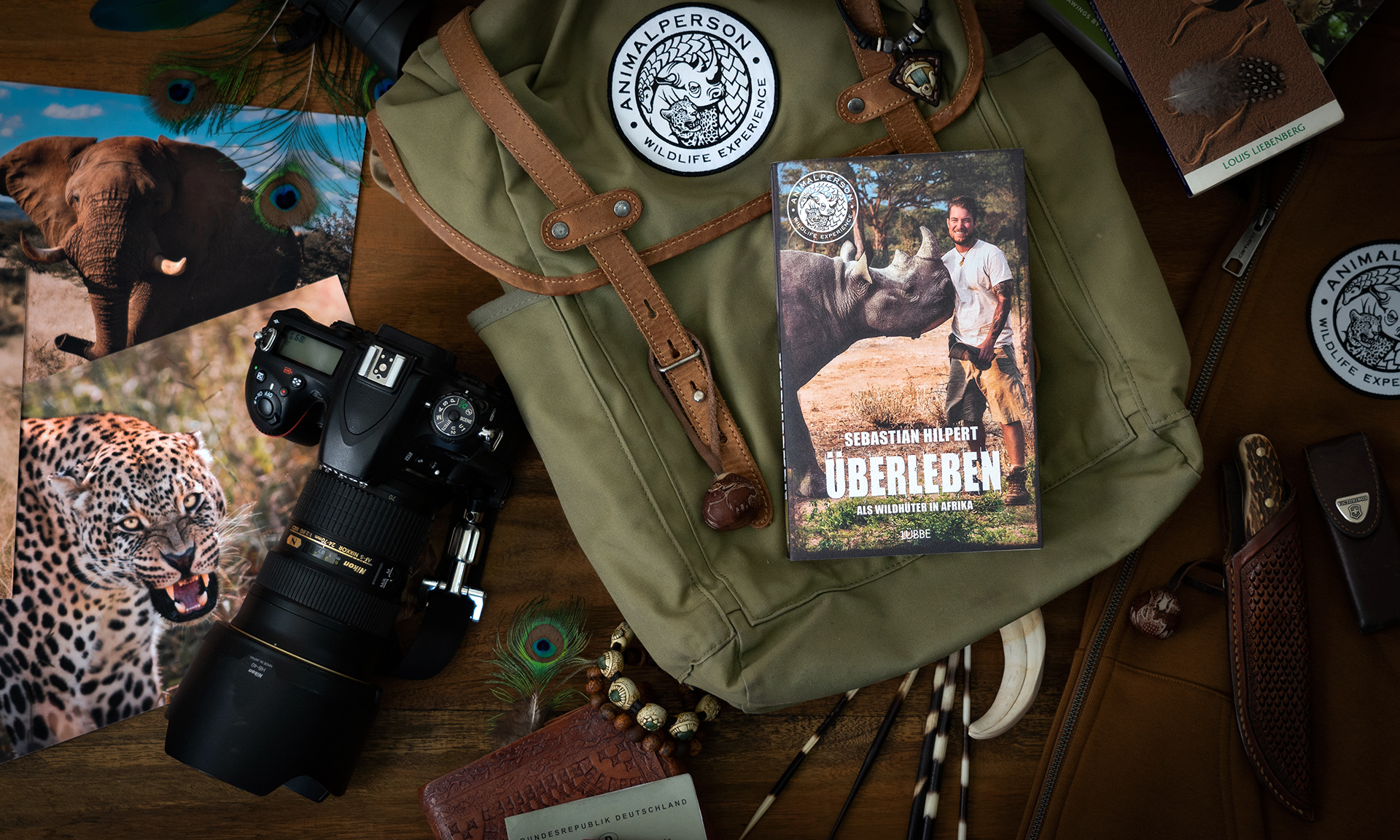
It’s 6.30 am. It’s a pleasant morning. It’s about 23 degree, the sun is still low on the horizon and has not yet wholly touched the valley through which I’m walking right now.
The day will become a hot one, just like the day before; and the day before that; and that day before that day; and all the other days before when the temperature had already reached 33 degrees at 11 o’clock in the morning. What makes the physical work even more strenuous is the high air humidity.
The hills surrounding me are overgrown; here and there some brown-red rocks are sticking out of the lush green. The air is still fresh from the night and filled with the song of the birds which is accompanied by the buzzing of the bugs.
I’m up since 5.30am; the clearly hearable roaring of a lion nearby came through the open door and windows and kept me from prolonging my nocturnal rest.
My shelter is a cottage with numerous holes which are surrounded by thin wood. It’s on a slope which is overgrown in lush green (like everything else around it). I feel like being in a true natural paradise with all the marula and mango trees around me.
My shelter is about 10 square meters big, including a bathroom with no mirror, and I share it with my three roommates. In the first two weeks, those were three girls from all over the world (Sweden, South Africa and USA). After about two weeks, I moved to another cabin with the “older ones” because the young American girl really started to annoy me.
Our daily schedule is quite busy. Besides watching the behavior of the animals, feeding them and cleaning out their dung, we have varying additional tasks like removing cut down mango trees. What make the physical work extra stressful are the saucer-sized spiders which tend to pop up from time to time. In my four week stay I only saw three snakes, but several scorpions reminded me of always looking under your cushion BEFORE sitting down. More frequent visitors are millepedes, baboonspiders and other huge insects. You’ll get used to it…

The first week was a tough one: high temperatures, the cultural shock and especially the language were major challenges for me. I’m the only German in our group of volunteers. Most of the others 8 to 16 volunteers come from the USA, UK or Australia and are therefore native speakers, all of them with a different dialect (South African, South Australian, Israeli, US West Coast, American Midwest, Oxford, Scandinavian, West Australia, Irish… ). It was quite a challenge for me and my average English skills to understand them. It became easier from week to week. Looking back, I think it was the best thing which could have happened to me.
At this point, one question comes up: Why did all these people, who come from all over the world, come to this place? A place were the water taps sometimes pour out red-brownish water, the electricity comes and goes and ticks and mosquitoes can infect you all kinds of diseases. What made the people travel there? These people are students, business managers, housewives, prospective vets, lawyers and former soldiers of all possible nations. All of them want to contribute to save a species which are close to being wiped out: the rhino .The rhino and all its subspecies are close to being erased from the face of our earth, although being part of it for over 50 million years. The question is: why?
The answer is as easy as it is sad: Rhino – Wars
The price for the horn of a rhino even tops its equivalent in grams of cocaine, gold or diamonds. Just because of the foolish Far Eastern misbelieve that it could enhance the male potency; it’s also a symbol of power in China. That made the poaching so lucrative that those poachers are equipped with night vision goggles and state-of-the-art fully automatic rifles with silencers. Those made the patrolling helicopter pilots wear bulletproof vests while flying over the area as several pilots have been shot from the ground by poachers.

What are the poachers actually doing?
The rhinos are killed or at least wounded in order to hack or saw off the horn from their face. If it’s a mother with its calf, the calf will be ignored because of not having a horn yet. If it’s trying to help its mother, the poachers will chase away the calf with their machetes or rifles.
In our rescue centre for rhino orphans we have several calves with scars on their head due to machete attacks. One has a gunshot wound as big as a fist in the shoulder; thanks to a proper treatment it healed quite well.
As soon as the poachers take off with their horn, they leave the hurt calf behind. The smell of the wound naturally lures predators. Without the prompt help of rangers, soldiers or others patrolling nearby, the baby rhino has a tough time ahead.
The poachers stop at nothing to complete their cruel mission. That’s why the 46.000 hectare area is specially secured with the rescue center in it: several fences, guards on foot, guards with Belgian Shepherds and mounted patrols.
And right in the middle of it, right in the eye of the storm: a small number of volunteers from all over the world who, together with some skilled personnel, are trying to look after orphan rhino babies and other animals.
What a place – what a time

